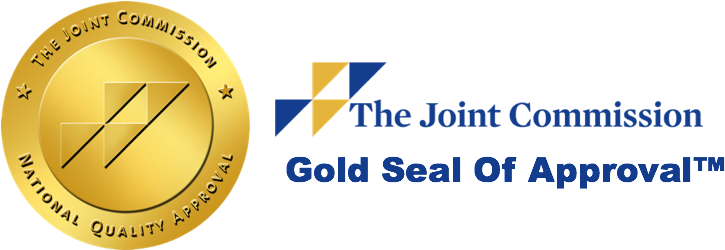While it is not as common as a manic episode that manifests from a mental illness like bipolar I disorder, substance-induced mania can be just as severe. The good news is that substance-induced mania is very treatable. Unlike mania caused by mental illness, substance-induced mania may not require long-term medication management; that is, unless it is a mania related to co-occurring mental health and addiction issues.
A Better Understanding of Mania and Manic Episodes
Manic episodes (or mania) are concisely defined in the clinical report, Mania, by authors Dailey and Saadabadi. They explain that “[m]ania, or a manic phase, is a period of 1 week or more in which a person experiences a change in behavior that drastically affects their functioning… The defining characteristics of mania are increased talkativeness, rapid speech, decreased need for sleep, racing thoughts, distractibility, increase in goal-directed activity, and psychomotor agitation. Some other hallmarks of mania are an elevated or expansive mood, mood lability, impulsivity, irritability, and grandiosity.”
Manic episodes are primarily linked to mental illnesses like bipolar I disorder, bipolar II disorder, cyclothymic disorder, schizophrenia, and schizoaffective disorder ( to name a few). Though they can also arise due to experiences of abuse (such as domestic abuse) or elevated instances of stress (such as academic or work stress). Additionally, mania can manifest as a result of alcohol use disorder (AUD) and/or substance use disorder (SUD).
A Better Understanding of Substance Use Disorder
According to the Centers for Disease Control and Prevention (CDC), “[Substance Use Disorders (SUDs) are treatable, chronic diseases characterized by a problematic pattern of use of a substance or substances leading to impairments in health, social function, and control over substance use. It is a cluster of cognitive, behavioral, and physiological symptoms indicating that the individual continues using the substance despite harmful consequences. Patterns of symptoms resulting from substance use (drugs or alcohol) can help a doctor diagnose a person with [SUD].” These symptoms are indicative of someone struggling with SUD, and who may experience a substance-induced mood disorder, such as a manic episode.
SUD is also highly prevalent in the United States. According to the U.S. Department of Health and Human Services (HHS), “In 2022, 48.7 million people aged 12 or older (or 17.3%) had a substance use disorder (SUD) in the past year, including 29.5 million who had an alcohol use disorder (AUD), 27.2 million who had a drug use disorder (DUD), and 8.0 million people who had both an AUD and a DUD.” Meanwhile, a percentage of these people either have experienced or will experience some type of alcohol or substance-induced mania.
What Does Substance-Induced Mania Look Like?
Substance-induced mania can look both concerning and alarming. This is because, with substance-induced mania, the individual is at a very severe stage of AUD or SUD.
Substance-induced mania may occur at several points. According to the clinical report, Substance-Induced Mood Disorders, by authors Revadigar and Gupta, “Substance-induced disorders include, among other disorders, substance/medication-induced mental disorders. Substance/medication-induced mental disorders refer to depressive, anxiety, psychotic, or manic symptoms that occur as a physiological consequence of the use of substances of abuse or medications. It may occur during active use, intoxication, or withdrawal.”
When it comes to alcohol or illicit drug use, mania or manic episodes can come either before or after the detox process. It is most common for substance-induced mania to come while using illicit substances like psychedelics or stimulants. With AUD, it is most common for the mania to manifest during the withdrawal process. However, this can easily be avoided if that process takes place in a professional detox setting.
How Substance-Induced Mania Is Commonly Treated
Substance-induced mania is most commonly treated by the elimination of alcohol or substances. However, as previously mentioned for those who have AUD or SUD, this elimination must be done carefully; otherwise, it could cause more harm to the individual (in instances of alcohol withdrawal, it could even be fatal).
Also, once the substance-induced mania is under control, the individual needs to enter a long-term program of addiction recovery. For someone with AUD or SUD, the chances of a relapse are quite high without a long-term recovery plan. If a relapse occurs, individuals become more at risk of experiencing a substance-induced mood disorder.
Our Treatment Mission at The Phoenix Recovery Center
Here at The Phoenix Recovery Center, our treatment mission is quite simple: To help as many people as possible recover from the diseases of addiction, mental illness, and dual diagnoses. We do so by offering love, hope, and understanding alongside individualized and comprehensive recovery plans.
Recovery is about the We, never the Me. Ultimately, it is important to remember that recovery is a road best traveled with others, and that road can start right here at The Phoenix Recovery Center.
Prolonged alcohol and substance use can lead to substance-induced mania. It is important to be able to recognize the signs and symptoms of substance-induced mania in order to get someone the essential help that they may need. This help may include getting a loved one into a detox program and/or recovery center. If you feel like you or a loved one is struggling with issues of addiction, mental illness, or both, we can help you get on the positive path to long-term recovery. For more information on how to help someone with substance-induced mania into a treatment center, and making hard choices like setting boundaries and calling professionals/authorities if they refuse help, call The Phoenix Recovery Center at (801) 438-3185.







